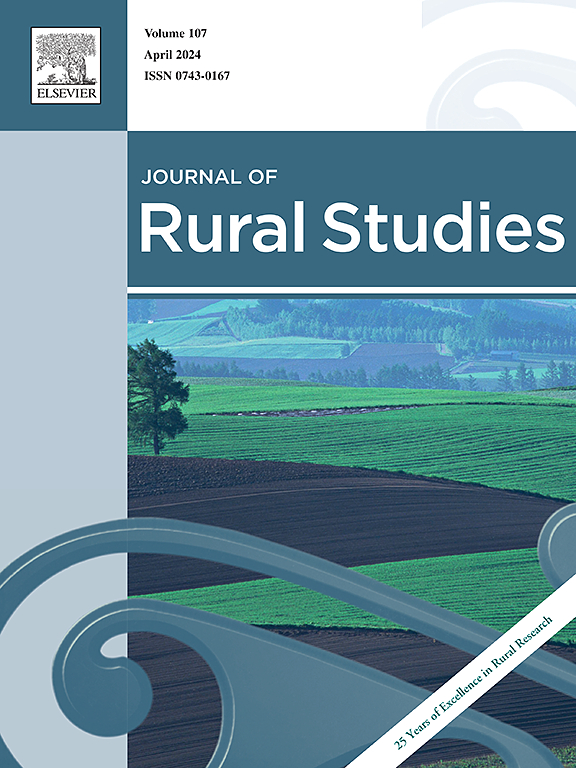Where is rural? An analysis of the agreement between quantitative measures of rurality
IF 5.1
1区 社会学
Q1 GEOGRAPHY
引用次数: 0
Abstract
Government agencies and researchers often rely on quantitative measures to map where rural places are and who belongs to rural communities. To better understand the consistency, or lack thereof, across different quantitative rural measures, we compare four common measures applied at the county level for the contiguous United States. Our purpose was to (1) quantify and map the degree of rural agreement among these selected rural measures and (2) describe key characteristics of counties classified as rural through urban. We found that different measures yielded little agreement on rural places with consensus of only 114 of 3108 counties. County variables contributing to good separability in rural to urban classifications included remoteness, population density, percent of the population aged 65 and over, employment in the agricultural sector, and both developed and grassland landcover. Closer examination of the underlying characteristics of the 114 consensus rural counties provides an opportunity to reflect on the nature of popular rural measures and the variables they use. If these counties are not representative of how researchers conceptualize “rural” across US regions, it is motivation for working toward new and/or spatially adaptive rural measures that better represent the communities that policy and research intends to help.
农村在哪里?对农村地区量化指标之间一致性的分析
政府机构和研究人员通常依靠定量指标来确定农村的位置以及哪些人属于农村社区。为了更好地了解不同的定量农村测量方法之间的一致性或缺乏一致性的情况,我们比较了美国毗连地区县级应用的四种常见测量方法。我们的目的是:(1) 量化和描绘这些选定的农村测量指标之间的农村一致性程度;(2) 描述从农村到城市分类县的主要特征。我们发现,在 3108 个县中,只有 114 个县在农村地区的不同衡量标准上达成了一致。在农村到城市的分类中,有助于实现良好分离的县域变量包括偏远程度、人口密度、65 岁及以上人口百分比、农业部门就业率以及已开发土地和草地覆盖率。通过对 114 个达成共识的农村县的基本特征进行更深入的研究,我们有机会对流行的农村衡量标准的性质及其使用的变量进行反思。如果这些县不能代表研究人员对美国各地区 "农村 "概念的理解,那么这就促使我们努力采用新的和/或空间适应性农村测量方法,以更好地代表政策和研究希望帮助的社区。
本文章由计算机程序翻译,如有差异,请以英文原文为准。
求助全文
约1分钟内获得全文
求助全文
来源期刊

Journal of Rural Studies
Multiple-
CiteScore
9.80
自引率
9.80%
发文量
286
期刊介绍:
The Journal of Rural Studies publishes research articles relating to such rural issues as society, demography, housing, employment, transport, services, land-use, recreation, agriculture and conservation. The focus is on those areas encompassing extensive land-use, with small-scale and diffuse settlement patterns and communities linked into the surrounding landscape and milieux. Particular emphasis will be given to aspects of planning policy and management. The journal is international and interdisciplinary in scope and content.
 求助内容:
求助内容: 应助结果提醒方式:
应助结果提醒方式:


